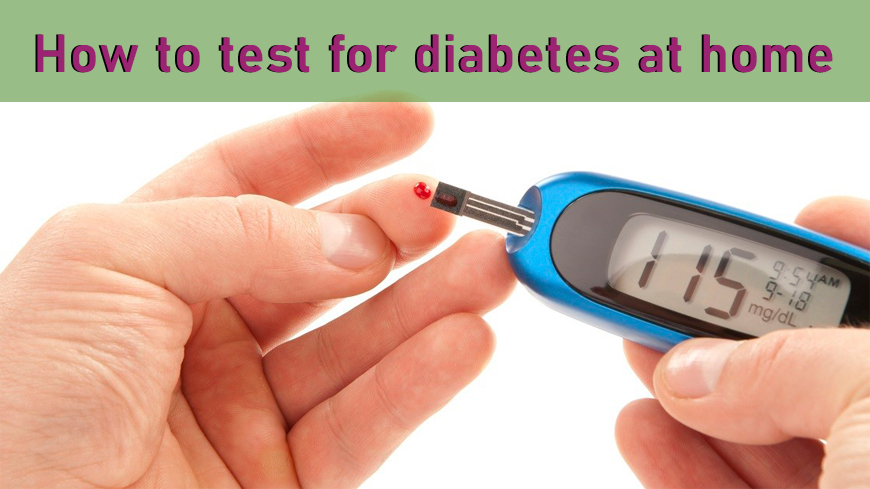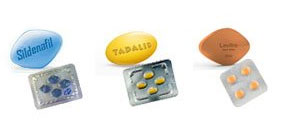How To Test For Diabetes At Home?

Performing a test for diabetes at home is an easy & affordable way to find out whether you’re suffering from it or not. Plus, in the early stages, it doesn’t cause any noticeable symptoms so a home test is something that you can try on your own before visiting a doctor. Here’s everything you need to know about it.
The blood contains sugar or glucose levels measured as the Glycaemic Index (GI). This parameter varies depending on the diet, physical activities, and lifestyle. Excessive sugar levels in the blood, depending on GI, are measured by the doctor when the case arises.
Now, the technology and equipment changed the world that diabetic (those with high sugar levels) patients have to do test for diabetes and its readings at home.
‘How to test diabetes at home is the next question that most of them search for. Well, that’s as easy as having any other simple activity with a blood sugar meter. But remember to test the blood sugar post meals which are rich in carbohydrates, with a quantity of 60 grams.
The significant advantage of going by the home test is a non-prescription method with almost approximate results. But, a doctor visit with an appointment scheduled can indicate the precise figures in the pre and post-food intake intervals.
Symptoms Of Diabetes
There is no particular evidence to prove one or more symptoms occurring in the body that turn out to be diabetes. At the same time, there are cases when few people need treatment for diabetes while they have no symptoms initially.
Both type 1 and type 2 diabetes may have similar signs as they affect blood sugar regulation. Here are the symptoms that occur when diabetes is or may roll in the body:
- high blood pressure
- unexplained weight loss
- blurred vision
- increased hunger and thirst
- unexplainable tiredness
- increased urination, particularly at night
- slow-healing sores, or wounds that appear to heal and then reopen
What’s A Diabetes Home Test?
Monitoring diabetes frequently at home can be a part of a better treatment plan. When there is a high increase in levels, run through a quick check of the diet with the doctor.
Although performing regular home tests, let the visit to a doctor be a formal need now and then to keep update with the other health conditions. Cholesterol and eye check-ups in parallel to sugar control processes are to be associated with proper overall health.
While staying in touch with your doctor is essential to be on top of your treatment plan along with diabetes medicines administration. You can and should test your blood sugar on your own as long as your healthcare team advises you to.
Self-monitoring your blood glucose may be vital to your treatment. Testing your levels allows you to learn how to manage your blood sugar no matter the time of day or where you are.
Learn how these tests work and talk to your doctor about the benefits of self-monitoring.
Who Should Test for Diabetes at Home?
Your doctor will help you decide if you need to test your blood sugar at home. If you do, they’ll work out how often you should check and at what times of the day. They’ll also tell you what your blood sugar targets are. You may consider diabetes home tests if you have:
- symptoms of diabetes
- prediabetes
- type 1 diabetes
- type 2 diabetes
By keeping track of blood glucose, you can discover problems in your current diabetes care.
70 to 140 milligrams per deciliter (mg/dL) are the levels of average blood glucose, says CDC. The level of depreciation below the lower circuit is low blood sugar, and above the upper limit is high blood sugar, respectively.
When the glucose or sugar levels are well in control, there are rare possibilities of other conditions such as:
- diabetic coma
- kidney damage
- nerve damage
- gum disease
- eye disease
Blood Sugar Testing Methods
Traditional Monitoring Method
Take a sharp needle (lancet) that’s available across medical stores, ask for sugar testing. As you pinch the needle on the top of the finger, the blood drop comes out. This drop has to be placed on the strip while purchasing a needle alongside. Place the blood sample strip into the meter that displays the sugar levels.
As the features, speed, portability, cost, size, and readability vary, meters are also available in the respective standards. Less than 15 seconds is the most likely possibility of the blood sugar testing device that displays the readings while few instruments store the data for future reference.
Continuous Glucose Monitoring System
Although one of the advanced methods with a formal name of interstitial glucose measuring devices, they are not as accurate as finger testing instruments. But a combination of insulin pumps can read the patterns and reveal the differences compared to the past.
Additional Parts of Body Testing
All sugar testing meters are accurate in testing levels, while few others add the benefits of testing other parts of the body. Conditions in the forearm, upper arm, the base of the thumb, and thigh can be in visual charts or graphs along with levels of sugar on the device.
However, the results or conditions in other parts may vary with just a blood sample from time to time. These alterations are never predictable as sugar levels do vary concerning the dietary and physical activities at the moment of testing.
Interpretation Of Results
For Diabetic Patients
Find the detailed figures of various timings or schedules to bring blood sugar levels to normal from this section using home treatment.
80–130 milligrams per deciliter (mg/dl) can be the normal level while fasting (morning testing or before a meal), while 70–130 mg/dl is a good to go range before meals.
Below 180 mg/dl is the level after 2 hours of meal consumption. While the circuit should be under 120 mg/dl at bedtime at night, HbA1c is to be 7.0 percent or lower.
There may be differences in ranges and values as the doctor suggests to control more or less in these circuits, depending on age, weight, and other factors. But it is clear to have a word with the physician before you start the home treatment.
For Non-Diabetic Patients
Under 100 mg/dl can be the normal level while fasting (morning testing or before a meal), while 110 mg/dl is the maximum level before meals.
Below 140 mg/dl is the sugar level after 2 hours of meal consumption. While the circuit should be under 120 mg/dl at bedtime at night, HbA1c is to be 5.7 percent or lower.
But when there are varying results each time you test at home, a visit to the doctor is a must. There might be tests, including fasting, HbA1c, and oral glucose tolerance. Sometimes a combination of these tests upon requirement is a possibility.
When to take a Test for Diabetes?
The detailed doctor check-up for diabetic patients proceeds with two cycles- pre and post-food consumption. The suggestions with home test might carry the following necessities regularly over a while:
- Morning fasting: With an empty stomach, including not consuming solids or liquids, the test has to be during the morning to note results on blood glucose levels. A note of these levels may help determine or compare the sugar levels for the rest of the day.
- Before a meal: Just as you approach food consumption, glucose levels are generally low. In contradiction, the issue arises when the levels go high during that time.
- Post-meal: The levels at this point of time can determine how the cells absorb the food, reaction of the body. And the usual recommendation of testing is 2 hours post-meal.
Performing The Test for Diabetes
Blood glucose tests come in varying forms, but they all have the same purpose: to tell you what your blood sugar level is then. Most home tests need:
- a lancet (small needle) and a lancing or lancet device (to hold the needle)
- test strips
- a glucose meter
- portable cases
- cords to download data (if needed)
Home testing follows these general steps:
- wash your hands
- put a lancet into the lancet device so that it’s ready to go
- insert a new strip into the meter
- prick your finger with the lancet in the protective lancing device
- carefully place the subsequent drop of blood onto the test strip and wait for the results
Results should generally show up within seconds. With some meters, you need to be sure the code on the strip matches the code on the meter. Also, be sure to check strips every once in a while to make sure they aren’t out of date.
Finally, most meters now have a way to use an alternative site for testing, such as your forearm. Talk to your doctor to decide what is best for you.
Home Testing vs Medical Testing
It’s so easy to have a test at home, but performing regularly keeps an up-to-date report on the blood sugar levels.
It’s unreasonable to assume that a few tests a year at the doctor’s office can give an accurate portrayal of your condition because glucose levels fluctuate throughout the day. However, this doesn’t mean that home tests should replace your regular preventive testing either.
In addition to self-monitoring at home, your doctor will likely recommend an A1c test. It measures how your blood glucose has been averaging over the last two to three months.
Getting regular lab tests can also help you determine how well you’re controlling your diabetes. They’ll also help you and your healthcare team decide how often to use your home test, as well as what your target reading should be.
Reading The Numbers
The overall health depends on the body’s response; one of the significant factors is the higher diabetes levels that the body inhibits during the treatment.
When there are unusual results in numbers while testing, seek medical attention by approaching the nearest doctor. 60 mg/dL and above, 300 mg/dL, and below can be the threshold values that can treat diabetes at home. In case the diabetes levels go below or above, respectively, meet the doctor right away.
Tell the readings that you have been noting for a couple of days to let the doctor understand the conditions along with diet, activities you perform. To know more please visit our website Securepharmaonline.
November 26, 2019 Sam Bell











Comments